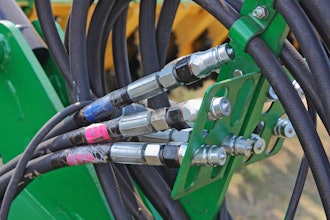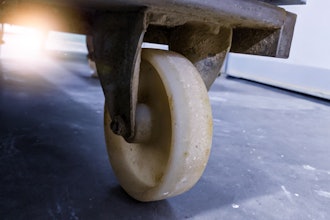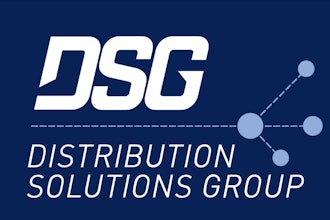If you’ve been to a trade show of any kind, you’ve seen those booths that always have a crowd in front, and everyone was talking about them. Yet the booth next door contained a lone salesperson sitting behind a table with no one to talk to. At the end of the show, which company do you think generated more business?
In order to make trade shows worth exhibiting at, you need more than a booth. You need a strategy, some savvy marketing, and a dynamic onsite presence. Here are our top tips on how to make this happen.
1. Develop a strategy for each trade show
In order to determine if you have a successful tradeshow, you need to have clearly defined goals for and expectations of the event. There are a variety of reasons a company might exhibit at a trade show — to gain brand awareness in a specific niche, to generate sales leads, to find new hires, or to use the show as a platform to build existing customer relationships through setting up meetings at shows throughout the country.
If you’re participating in several shows, you may have a different strategy for each show depending on each show’s audience. What you do before, at, and after each show will stem from the goals set. If you’re looking for new clients, look for avenues to promote your booth and show beforehand to attract companies in your target market. If you want to build current client relationships, focus your pre-show promotion on booking those meetings and give your customers a reason to show up.
2. Set yourself up for success
Set yourself up to have a successful show with some proactivity. Let your customers and contacts know that you’re going to be at the event and send personal invites for them to join you; post about it on social media and send out marketing emails. For larger trade shows, consider offering guides or information on the event as well as where your booth is located. Great things to bring up include:
- Speakers you’d recommend
- Sessions to attend
- What you’re featuring at the show
- Information on how to get discounted or free show admission
- Other important event info
See if you can lead a session or have someone from your company speak or take part in a panel during the event. This provides not only exposure of your expertise to a niche audience but gives your booth staff something to discuss with visitors and a reason to cross-promote.
3. Select an optimal booth location and make it inviting
When choosing the location of your booth, choose wisely. Think about the flow of traffic and where people are going to be walking. A good rule of thumb is to be near the food or coffee, as this is where people often gravitate.
Consider where your competitors might be located, or if there are any companies that offer complimentary services you could exhibit close to. To do this you’ll need to register for the conference far in advance, as ideal locations get snapped up quickly.
When setting up your booth, make it appear open and inviting so people will want to stop and talk. You want to create a space that makes them feel comfortable rather than trapped or closed off — stay away from tables lining the front of your booth — and make sure staff are attentive and ready to meet visitors.
4. Put the right people in your booth
If you’re looking to generate leads with this trade show, consider adding a marketing person in your booth as well as customer service or salespeople. Different teams have different priorities, and marketing staff will be more focused on generating leads, while salespeople are looking at cultivating those prospects and converting them to customers. This allows you to better manage your booth traffic — marketing people gather leads to leave your sales and customer service people available to qualify prospects and build relationships.
5. Meet your fellow exhibitors
Use the event as an opportunity to walk around and talk to the other exhibitors. Investigate what is being given away for swag and how other booths are set up. See what works and what doesn’t. You may also learn about other trade shows that they have exhibited at in the past and found successful. You may also find prospects amongst the other exhibiting companies, especially at a trade show targeted to a specific industry, so take some time to meet your neighbors.
6. Follow up promptly
Tradeshows are a unique space where connections are made — don’t waste this opportunity! Bring along a notebook and jot down a couple of notes about each person you meet. Or write down a few talking points on the back of their business card. Follow up as soon as you can after the show, and mention something you spoke about, or what aspects of your business they were particularly interested in.
Many companies upload customer lists to their home office at the end of each day and send a follow-up email to thank visitors for stopping by. For those you may not have had a meaningful conversation with, connect with them on LinkedIn or set up an email campaign specifically created for people who attended that event.
Many tradeshow efforts fall short because attendees are not followed up with. Follow up with contacts you made at the show – just don’t mistake these contacts as warm leads. Most are not ready to be sold to just yet, but a quick thank-you email introducing your company will allow you to gauge interest and flag the contacts who are most interested.
7. Do a post-show debrief
A very important but often neglected step is to have a post-show debrief. As soon as possible after the trade show, have a meeting with your team to discuss what went well and what didn’t. Re-examine the initial goals you made before the show and evaluate if you were able to meet them. Make sure you document all of these findings so that you can make improvements for your next show.
You should also return to this after a few months to see if any of the connections you’ve followed up with post-event have turned into sales. Doing these evaluations and reflections will help you determine your ROI on the tradeshow and help you make good decisions when it comes to signing up for the next event.
You don’t have to have the largest booth or have the best give away to achieve success with your trade show. Any company can be successful at marketing through trade shows with a solid strategy, a team engaged in making the strategy come to life and sold follow up after the show.
Michelle Elford is account manager at ActiveConversion. She studied marketing before spending several years working with petroleum geomatics professionals around the world. Elford interacts with industrial companies on a daily basis to help drive business growth through online marketing technology.
This blog was originally posted by ActiveConversion here.






















